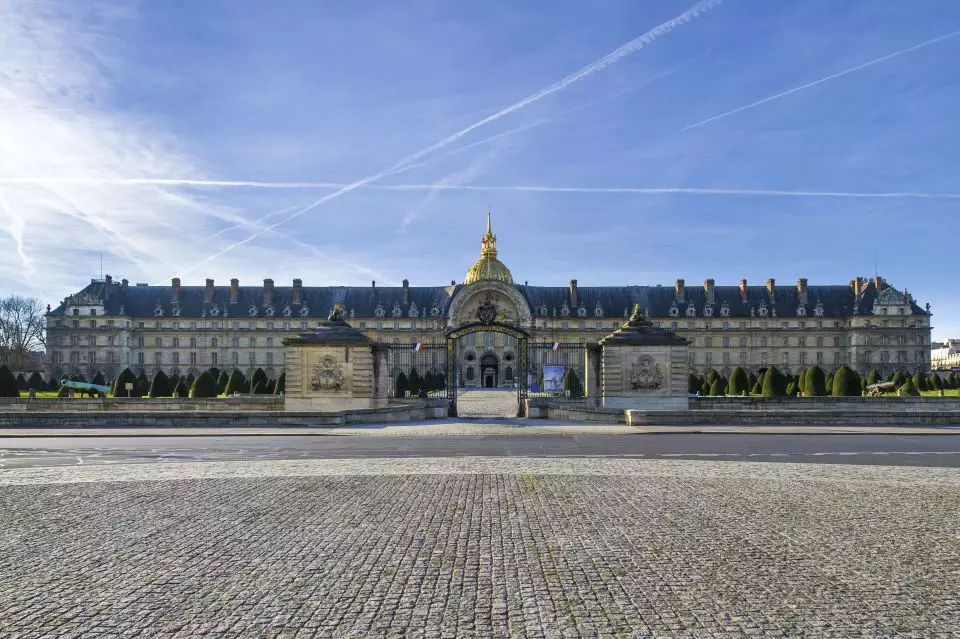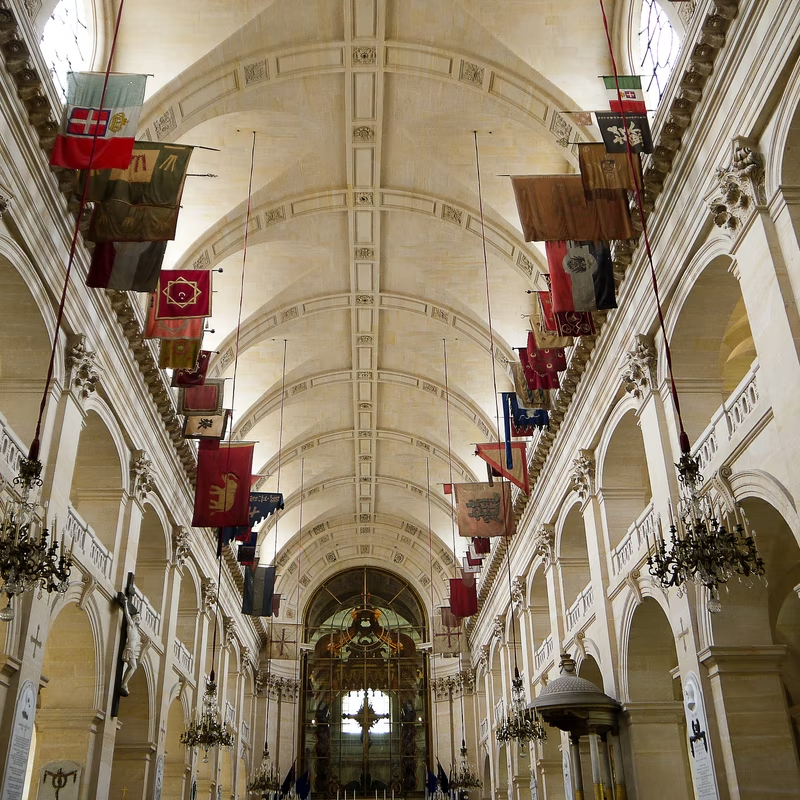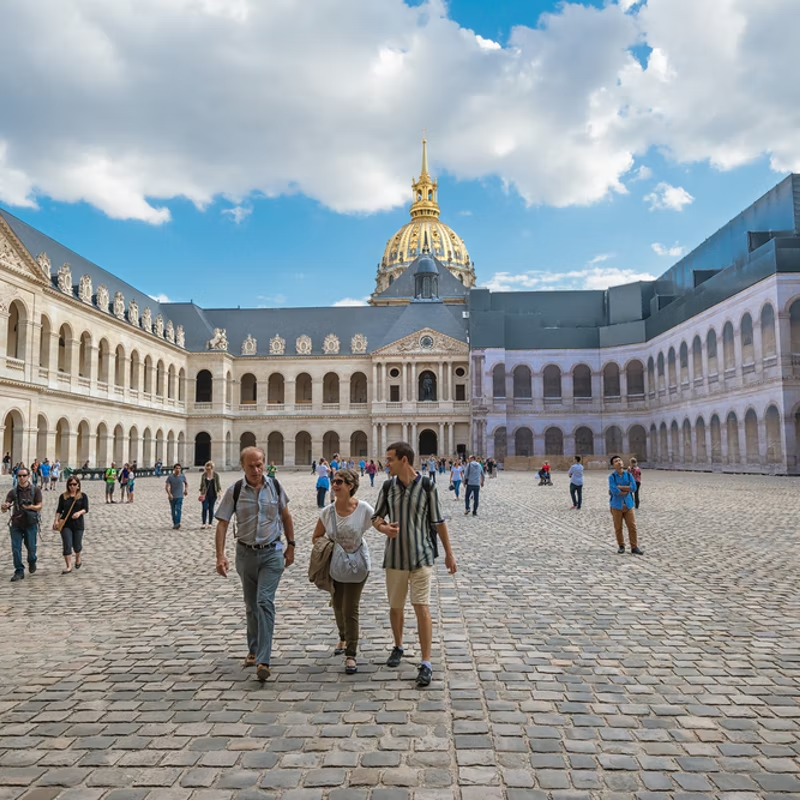The Army Museum - Les Invalides

Musée de l'Armée - Les Invalides – Admission, Tickets, Opening Hours, Waiting Times and More Tips
Experience one of France’s top 5 museums, visited by up to 1.5 million people each year. In addition to the exceptional military and art exhibitions, you can also visit the tomb of none other than Napoleon Bonaparte, who was buried in the Dôme des Invalides in 1861. The Musée de l'Armée ranks among the three largest military museums in the world. In addition to ancient weapons, armor, and military artifacts, the museum also features numerous artworks and paintings from several centuries.
History of the Musée de l'Armée
The Musée de l'Armée, also known as the Army Museum, is located in the historic Hôtel des Invalides in Paris. This impressive structure was built in the 17th century by King Louis XIV as a hospital and retirement home for wounded and disabled soldiers. Today, the Hôtel des Invalides is not only an important cultural site but also a national symbol of France’s military history.
Foundation and Development
The Musée de l'Armée was established in 1905 through the merger of the Musée d’Artillerie and the historical collections of the Ministry of the Army. This unification brought together one of the world’s most extensive collections of military artifacts, which continues to grow and evolve to this day.
Collections and Exhibitions
The museum houses an impressive collection of over 500,000 items ranging from antiquity to the present day. Highlights include armor, weapons, uniforms, artworks, models, and historical documents. The exhibitions are organized thematically and chronologically to offer visitors an informative and accessible journey through military history.
A special focus is placed on the military conflicts that have shaped France, including the Napoleonic Wars, World War I and II, and the colonial wars. The museum also holds a significant collection of items that once belonged to Napoleon Bonaparte and has a dedicated gallery honoring him.
The Tomb of Napoleon Bonaparte
One of the main attractions of the Hôtel des Invalides is the tomb of Napoleon Bonaparte. His impressive sarcophagus lies beneath the golden dome of the Church of Saint-Louis-des-Invalides and draws thousands of visitors each year. This mausoleum is not only a significant historical monument but also a symbol of Napoleon's impact on French and European history.
Modern Expansions and Educational Programs
In recent years, the Musée de l'Armée has modernized its exhibitions and added interactive elements to enhance the visitor experience. The museum offers a wide range of educational programs, guided tours, and events tailored to various age groups and interests. These initiatives help to promote historical awareness and convey the relevance of military history in today’s world.
How to get to the Invalides in Paris
The Musée de l'Armée - Les Invalides is easily accessible by public transportation in Paris. You can take metro lines 8 or 13. If you prefer to travel by bus, there are numerous bus lines that stop near the Invalides and the museum. Alternatively, the RER C regional train line is also available.
| Address | Transport |
|---|---|
| 129 Rue de Grenelle 75007 Paris | La Tour Maubourg |
Invalides | |
Varennes | |
| |
Varennes | |
La Tour Maubourg" |
How much is the entrance fee to the Musée de l'Armée - Les Invalides?
Adult visitors aged 18 and over pay 17.00 euros for the museum with all its exhibitions and access to Napoleon Bonaparte's tomb at the on-site ticket offices. Adolescents and children under 18 years have free admission.
| Regular ticket (on site) | |
|---|---|
Adult | 17,00 € |
| Children & Teenagers (till 18 years) | free |
Where can I buy tickets for the Musée de l'Armée - Les Invalides?
Tickets can be purchased directly at the ticket office at one of the entrances to the museum. It is recommended by the provider to book the tickets for the museum in advance online. The advantage of online tickets is that they are often a little cheaper than at the ticket office on site, and you can go straight to the entrance without waiting.
Book tickets Army Museum - Les Invalides
How long are the waiting times at the Invalides and the Herres Museum?
Since the Musée de l'Armée - Les Invalides has over 1.5 million visitors per year, there can sometimes be very long queues, on the one hand at the ticket offices and on the other hand at the entrance. Especially during the vacation season, on weekends and in the summer months, waiting times of 1 hour and more are not uncommon. We recommend that you buy a ticket online before your visit, so you avoid the waiting times at the ticket office and can go straight to the entrance.
What are the opening hours of the Musée de l'Armée - Les Invalides?
The museum is open to visitors every day of the year except January 1 and May 1 and December 25. Admission to the Musée de l'Armée - Les Invalides begins daily from 10:00 am. Except for Tuesdays (21:00), the museum closes at 18:00. The last admission is always 30 minutes before the museum closes.
| Weekday | Opening hours |
|---|---|
| Monday | 10:00 am - 6:00 pm |
| Tuesday | 10:00 am - 9:00 pm |
| Wednesday | 10:00 am - 6:00 pm |
| Thursday | 10:00 am - 6:00 pm |
| Friday | 10:00 am - 6:00 pm |
| Saturday | 10:00 am - 6:00 pm |
| Sunday | 10:00 am - 6:00 pm |
Current Special Exhibitions at the Musée de l'Armée
Every year, several additional exhibitions are presented within the museum. These are already included in your ticket along with the permanent exhibitions.
| Special Exhibition | Period |
|---|---|
| Fighting in Exile. Artists and France 1939–1945 | February 26, 2025 – June 22, 2025 |
Aura Invalides
Experience an extraordinary adventure in the heart of Les Invalides
AURA INVALIDES offers you a nocturnal immersion under the dome of the Hôtel des Invalides. This event highlights the impressive architectural heritage of the monumental building through light shows, video projections, and music, taking you on a spectacular journey befitting the setting. In this experience, you get the opportunity to discover the historic site in a completely new light.



